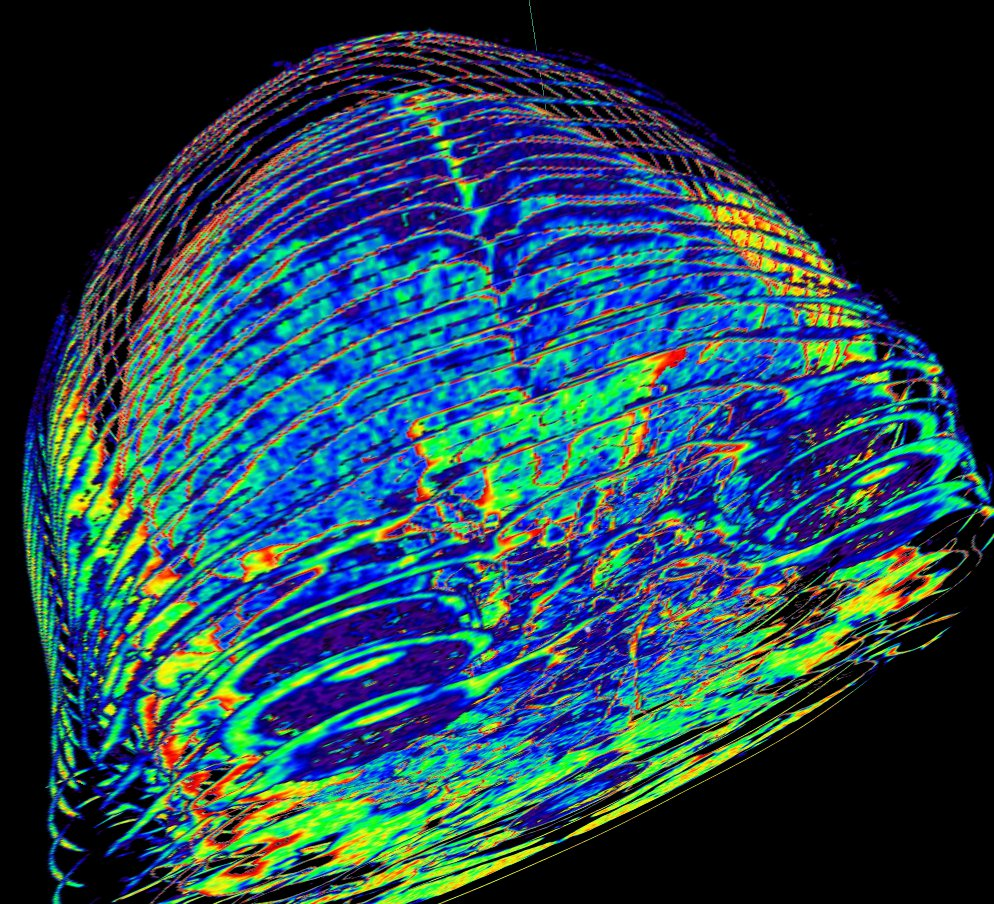
Understanding Trumps Insight

“What have you done for me lately?” That’s the question many companies are asking of big data, which stands accused of being nothing more than a fad. For many, advanced analytics is still just that – too advanced. Data is difficult to access, blend and understand, and the market is over-saturated with advanced analytics tools. So what’s the solution? A combination of machine intelligence and visualization.
We’re all familiar with business intelligence (BI) software. It’s great at presenting trends in data through charts, graphs and dashboards, but without supplemental applications, it’s not able to deliver understanding into causes and solutions. To gain a comprehensive understanding of a situation and unearth a solution, both visualization and machine intelligence tools are vital.
Let’s explore a sample problem and evaluate some potentially effective approaches. We’ll take homelessness as a complex, important, and easy-to-follow example. If a U.S. Senate policy analyst was trying to identify various counties experiencing shortfalls in emergency housing, a visualization tool would be perfectly sufficient on its own. But what if the analyst wants to develop a holistic understanding of the homelessness epidemic? What if she wants to not only create a temporary fix, but drive at and unlock a sustainable solution? She would have to go beyond lining up emergency housing. She’d have to identify, unlock, and fully understand why people end up on the streets in the first place – so she can solve the problem at its core and change the direction of the future.
As data swells, the demand for analytics solutions increases, which has companies investigating new ways to enhance their analytics stacks and develop a deeper understanding of raw data. This need to identify effective solutions crosses industries. On one end of the spectrum, medical device manufacturers need fast, machine-generated answers informing them of issues in the manufacturing process and how to fix them, instead of simply flagging a problem. On the other end, financial services firms may need to know when an asset class gets too risky and how to decrease risk to the system.
Visualization and machine intelligence go hand-in-hand: a BI tool may be an excellent means of dashboarding to locate anomalies and successes, and to figure out the right questions to ask: Why is this happening? Should I expect this to change? How can we optimize this number or this outcome? Machine intelligence is the next weapon in the arsenal that will actually answer in plain English how and why these outcomes are happening, without having to rely on long, manual time-to-insight cycles with statistical software or traditional machine learning methods.
Multi-billion dollar investments in BI and visualization tools have opened the gates to an unprecedented amount of raw data for predictive modeling, but contemporary modeling and machine learning tools rely on slow, error-prone, manual testing frameworks. They require specialized individuals to first make assumptions about the underlying data, then manually manipulate the data to find how well it fits their particular assumption. The process of cleaning, transforming, modeling, and validating data may yield results over time, but the model may only answer one targeted, specific question – likely using an old subset of data. Machine intelligence can incorporate all of your data; automatically create the most important features; publish transparent, consumable analytical models that tell you how your entire problem fundamentally “works”; and  communicate what changes to make to yield your desired outcome…all in a matter of minutes.
communicate what changes to make to yield your desired outcome…all in a matter of minutes.
As problems become more complex, patching databases and BI tools together is not sufficient to produce critical answers. Companies need holistic data models that transparently explain how and why things happen. When developing big data strategies, businesses don’t want to hear about “analytics for the masses.” Rather, they want a way to extract comprehensive, transparent stories from their raw data without the heavy lifting.
Machine intelligence is a disruptive innovation that represents a shift in the way data scientists, analysts, and organizations approach advanced analytics. It cuts out the red tape that’s previously been associated with “data science” by automating new modeling techniques and providing interpretability. This framework dramatically improves time-to-value at both ends of the analysis cycle. First, automated algorithms search through billions of potential solutions every second to discover the optimal analytical models for your data. Second, transparent answers empower users to leverage their business expertise and rapidly iterate to find the right answer for each specific business opportunity.
By utilizing machine intelligence, companies can simplify all of the technical components of advanced analytical modeling, so business users can work with raw data, apply the necessary context and expertise to the problem at hand, and work with fast, accurate solutions to drive real innovation.
Machine Intelligence at Work
Healthcare is one industry leading the way in machine intelligence-based decisions. Acute appendicitis is a painful, life-threating problem for which treatment depends entirely on whether or not the appendix has already burst. Though a CT scan is effective, it can be harmful to children. Is there a quicker, less detrimental way? The American Journal of Roentgenology published a study describing how healthcare providers are leveraging machine intelligence to increase the predictive accuracy of whether or not a child has a perforated appendix (a life-threatening scenario), while minimizing potential harm to the child during testing. Could patterns hidden within less-harmful ultrasounds contain the answer?
Leveraging a machine intelligence application, clinicians indeed discovered an analytical model from ultrasound data that was both more predictive than CT scans and less dangerous for kids. In patients younger than eight, loss of the  ecogenic submucosal layer was often associated with perforation, an indicator that was previously unknown. The final result of the study was a simple rule for the interpretation of ultrasound findings, a rule that researchers said they couldn’t have discovered without machine intelligence: If the ultrasound shows an abscess, or if the patient is younger than eight and the ultrasound shows either loss of the submucosal layer or an appendicolith, there’s a remarkably high likelihood of a perforated appendix. Since implementing this protocol, clinicians have diagnosed perforation in children early, preventing additional complications.
ecogenic submucosal layer was often associated with perforation, an indicator that was previously unknown. The final result of the study was a simple rule for the interpretation of ultrasound findings, a rule that researchers said they couldn’t have discovered without machine intelligence: If the ultrasound shows an abscess, or if the patient is younger than eight and the ultrasound shows either loss of the submucosal layer or an appendicolith, there’s a remarkably high likelihood of a perforated appendix. Since implementing this protocol, clinicians have diagnosed perforation in children early, preventing additional complications.
Energy companies are also reaping the benefits of machine intelligence capabilities. Kansas City Power & Light (KCP&L) relies on a machine intelligence-generated algorithm to understand the effects of weather on power usage. Predicting usage is a complex task that involves leveraging historical weather and electric load data to generate models. Previously, KCP&L’s analysts utilized Excel for data analysis, and while it worked well for most linear regressions, working with the larger data sets proved cumbersome. The analysts had to perform time-consuming changes before the nonlinear weather-to-usage relationships could be modeled within Excel.
By switching to machine intelligence, the analysts are easily identifying linear relationships, and more importantly, nonlinear relationships. All their data, from forecasted weather conditions to electric load data, are fed into their application to generate usage predictions and skyrocket the accuracy of demand forecasting.
As access to computing power and data infrastructure expands, companies can increasingly rely on machine intelligence to perform analytic tasks along every step of the big data pipeline. And as the understanding of, and demand for, machine learning algorithms grow, businesses can harness hassle-free predictive analytics. Sifting through data would otherwise take excessive amounts of time for an analyst or data scientist, with little-to-no hope of finding the pot of gold at the end of the proverbial rainbow. Machine intelligence is the closest thing to an “easy button for big data” that the data scientist and analyst community has seen to date.
About the author: Scott Howser is SVP Products and Marketing at  Nutonian, with responsibilities for product management, marketing and business development. Prior to joining Nutonian, Scott served as vice president of products and marketing at Hadapt with responsibilities for product management and marketing. Prior to Hadapt, Scott was vice president of product marketing at Vertica, an HP Company, with responsibility for product messaging, corporate branding, and establishing best practices for deployment and solutions architectures. Scott earned an M.B.A. from the University of Notre Dame, an M.S.I.S.M from Loyola University Chicago, and a bachelor’s degree from Ohio Dominican University.
Nutonian, with responsibilities for product management, marketing and business development. Prior to joining Nutonian, Scott served as vice president of products and marketing at Hadapt with responsibilities for product management and marketing. Prior to Hadapt, Scott was vice president of product marketing at Vertica, an HP Company, with responsibility for product messaging, corporate branding, and establishing best practices for deployment and solutions architectures. Scott earned an M.B.A. from the University of Notre Dame, an M.S.I.S.M from Loyola University Chicago, and a bachelor’s degree from Ohio Dominican University.
Related Items:
How to Turn Your Company Into a Data-Driven Enterprise
The Real-Time Future of Data According to Jay Kreps
Solving Hadoop Problems, For Fun and Profit






























